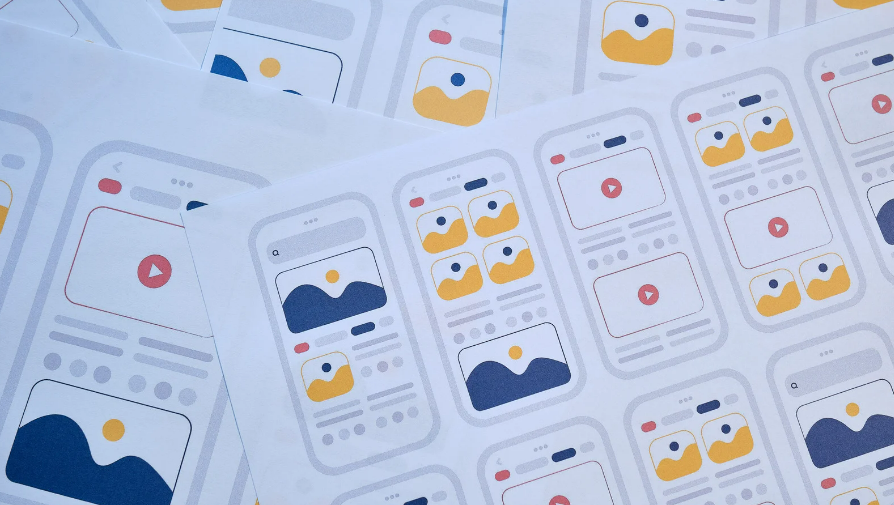Are you looking to level up your UX UI design skills? In my latest article, I dive into the world of UX UI design courses and why they are essential for aspiring designers. Whether you’re a beginner looking to kickstart your career or a seasoned pro wanting to stay ahead of the curve, investing in a UX UI design course can be a game-changer.
UX UI Design Course
When it comes to UX UI design, it’s essential to grasp the significance of seamless user experiences and engaging interface designs. UX (User Experience) focuses on enhancing user satisfaction by improving the usability, accessibility, and pleasure provided when interacting with a product. On the other hand, UI (User Interface) design concentrates on the look and feel of the product, ensuring the users have visually appealing and functional elements to engage with.
UX UI design is crucial for creating products that not only look great but also offer intuitive user experiences. As a designer, I find that mastering the principles of UX UI design is a continuous learning process that involves understanding user behaviors, preferences, and trends in design aesthetics. By investing time in UX UI design courses, I’ve been able to refine my skills and create products that resonate with users on a deep level.
A solid foundation in UX UI design enables me to anticipate user needs, simplify complex interactions, and craft visually stunning designs that elevate the overall user experience. Whether you’re a beginner looking to break into the field or an experienced professional aiming to enhance your skills, delving into UX UI design courses can open up a world of opportunities and take your career to new heights.
Benefits of Taking a UX UI Design Course
Enrolling in a UX UI design course offers a multitude of advantages that can significantly boost your career in the digital design industry. Here are some key benefits I’ve personally experienced and observed:
- Hands-On Experience: Courses provide practical, hands-on opportunities to apply design principles and tools in real-world projects, enhancing your skills effectively.
- Industry-Relevant Skills: Stay updated with the latest UX UI trends and technologies, ensuring that your design knowledge remains relevant and marketable.
- Networking Opportunities: Interact with like-minded professionals, instructors, and industry experts, opening doors to potential collaborations and career opportunities.
- Portfolio Enhancement: Build an impressive portfolio showcasing your design projects and demonstrating your ability to tackle diverse design challenges.
- Career Advancement: Acquire in-demand skills that employers seek, increasing your competitiveness in the job market and unlocking new career prospects.
- Increased Earning Potential: With advanced UX UI skills, you may command higher salaries and land lucrative job offers in the design field.
By seizing the opportunities offered by UX UI design courses, you can accelerate your growth as a designer and position yourself for success in the dynamic world of digital design.

How to Choose the Right UX UI Design Course
When selecting a UX UI design course, consider these key factors to ensure you make the most of your learning experience:
- Curriculum: Look for a course that covers essential topics such as user research, wireframing, prototyping, UI design principles, and design tools.
- Instructors: Choose a course with industry professionals as instructors who can offer real-world insights and guidance.
- Projects: Opt for a course that includes hands-on projects to help you apply what you learn and build a strong portfolio.
- Flexibility: Consider the flexibility of the course in terms of schedule, pace, and delivery format to suit your learning style.
- Reviews: Check student reviews and testimonials to gauge the quality and effectiveness of the course.
Remember, investing in the right UX UI design course can be a game-changer for your career in the digital design industry.

Advanced Techniques and Tools in UX UI Design
When diving into advanced techniques in UX UI design, it’s crucial to stay updated with the latest trends. Responsive design is a must, ensuring your creations are seamless across all devices. Microinteractions may seem minor but greatly enhance user experience. Voice user interfaces are gaining popularity, requiring a shift in design thinking.
In terms of tools, proficiency in software like Sketch, Adobe XD, and Figma is essential. Prototyping tools such as InVision and Proto.io help bring designs to life. User testing platforms like UserTesting provide valuable feedback. Analytics tools such as Google Analytics offer insights into user behavior.
Embrace motion design to create engaging interactions. Accessibility features ensure inclusivity for all users. A/B testing helps optimize designs based on user preferences. Information architecture skills aid in organizing content effectively.
